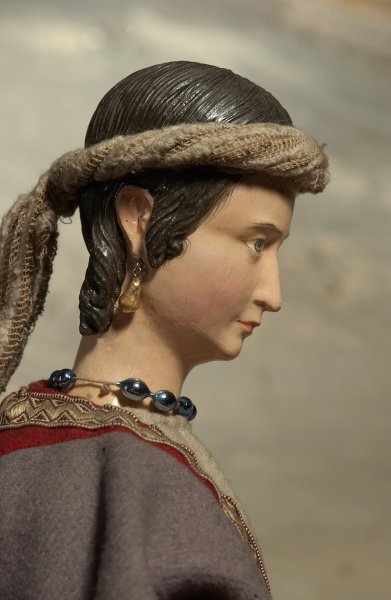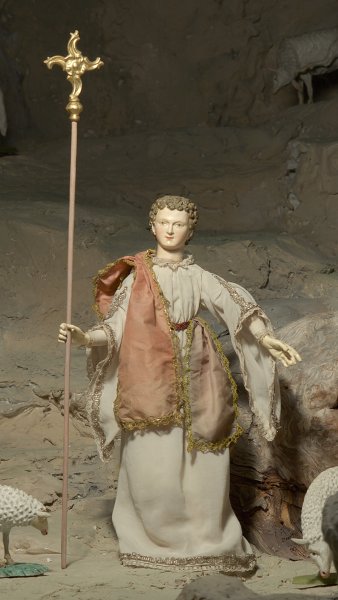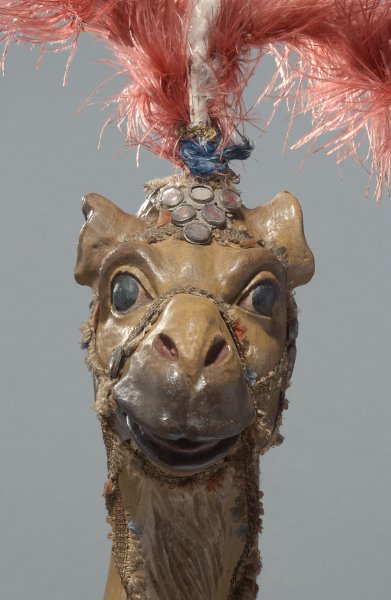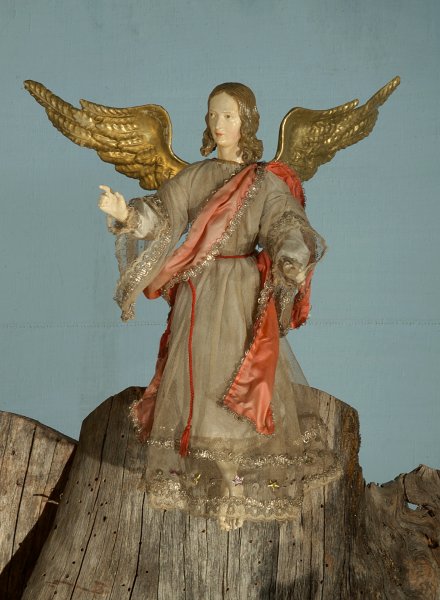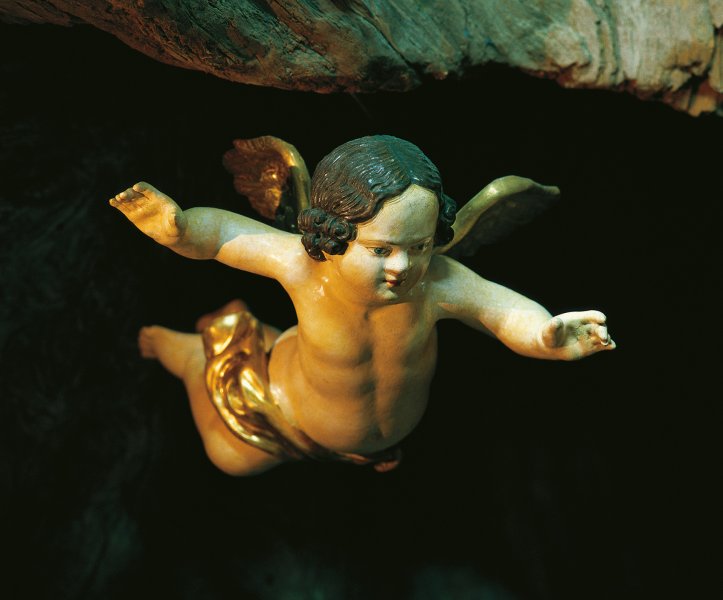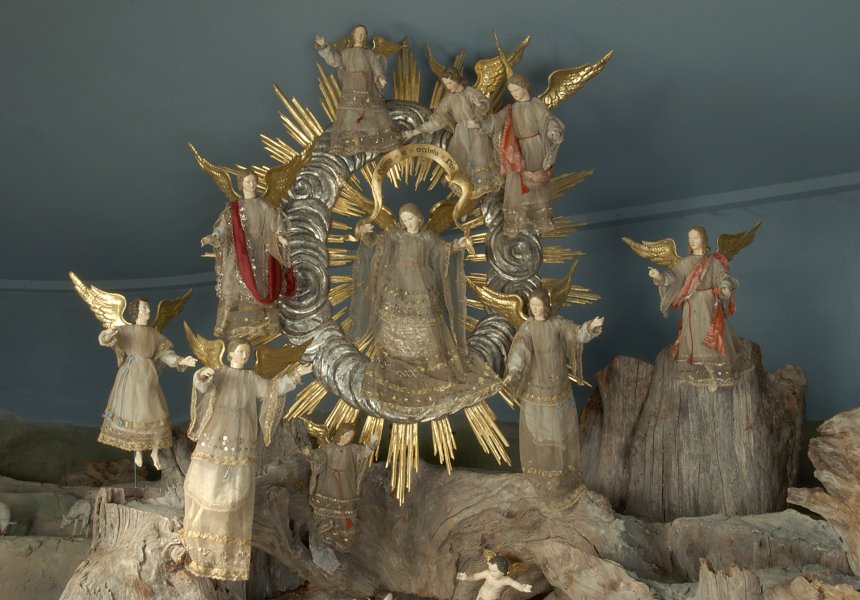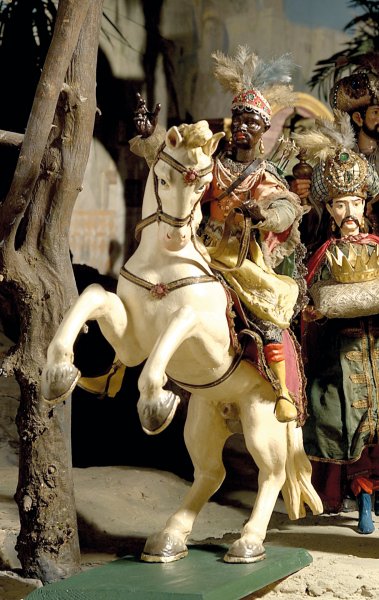
Nativity Scene Exhibition
A blue arched doorway on the ground floor leads through to the world of the ‘static theatre’ – the Nativity Scene room.
Entering the Nativity Scene room the huge Oberammergau Church Nativity on the right-hand side depicts the Marriage at Cana, the procession of the Three Kings and the Christmas nativity scene. Over a period of more than 100 years this Church Nativity was created by woodcarvers from the village for the parish church of St Peter and St Paul that was completed in 1742. Unlike most other nativity scenes created at that time, this work was not a commission; instead, the figures were made and donated by the woodcarvers and merchant-manufacturers themselves as a sign of their piety and community spirit.
The oldest figures are from the 18th century; the majority, however, were made in the first half of the 19th century. Around 1860, the nativity scene was considerably expanded to include the Marriage at Cana. As a result, the Nativity has a total of some 200 figures and, by the mid 19th century, it had become a well-known attraction. King Ludwig II also visited the parish church in Oberammergau to marvel at the Nativity Scene.

In addition to others that are representative of the Oberammergau nativity scene-making tradition, the display includes serveral made of paper by the well-known ‘Lüftl’ (trompe l’œil) painter Franz Seraph Zwinck (1748–1792) who created the façade of the Pilatushaus, for example.
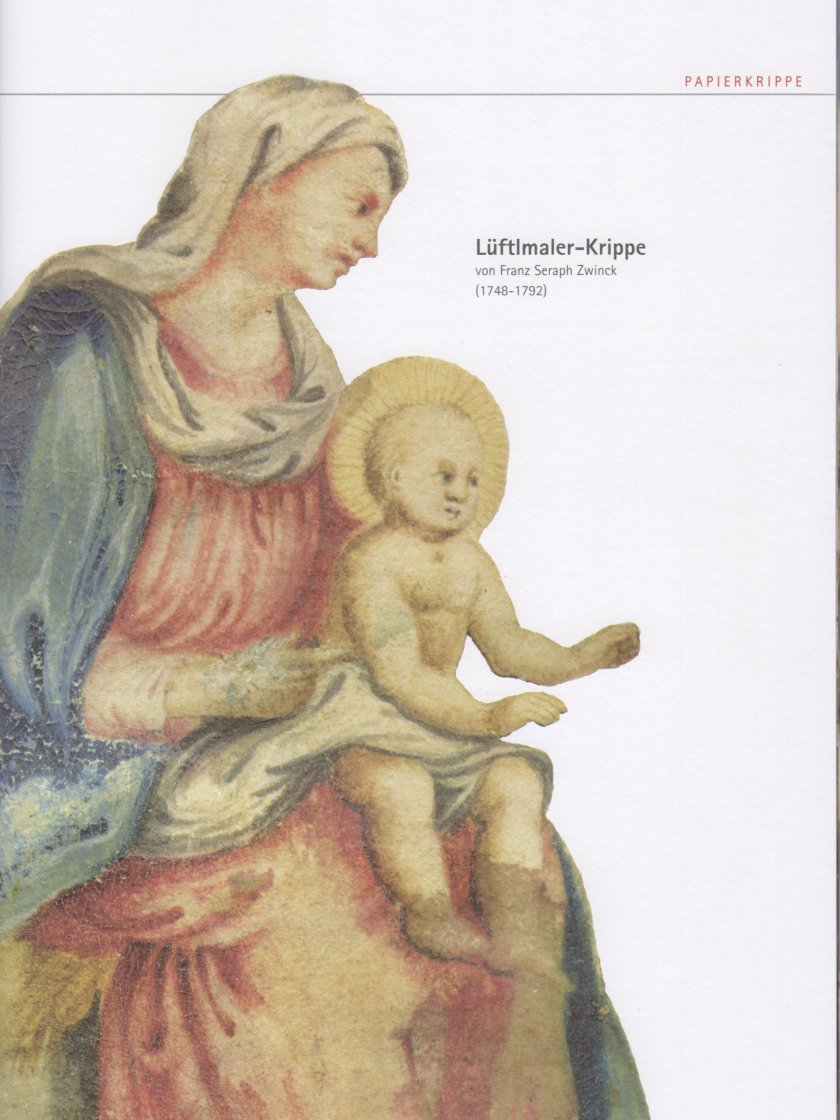
Lüftlmalerkrippe
von Franz Seraph Zwinck
Bastelbogen aus Papier mit 26 Figuren und Krippenlandschaft
Preis: € 21,-
inkl. MwSt und zzgl. Versandkosten
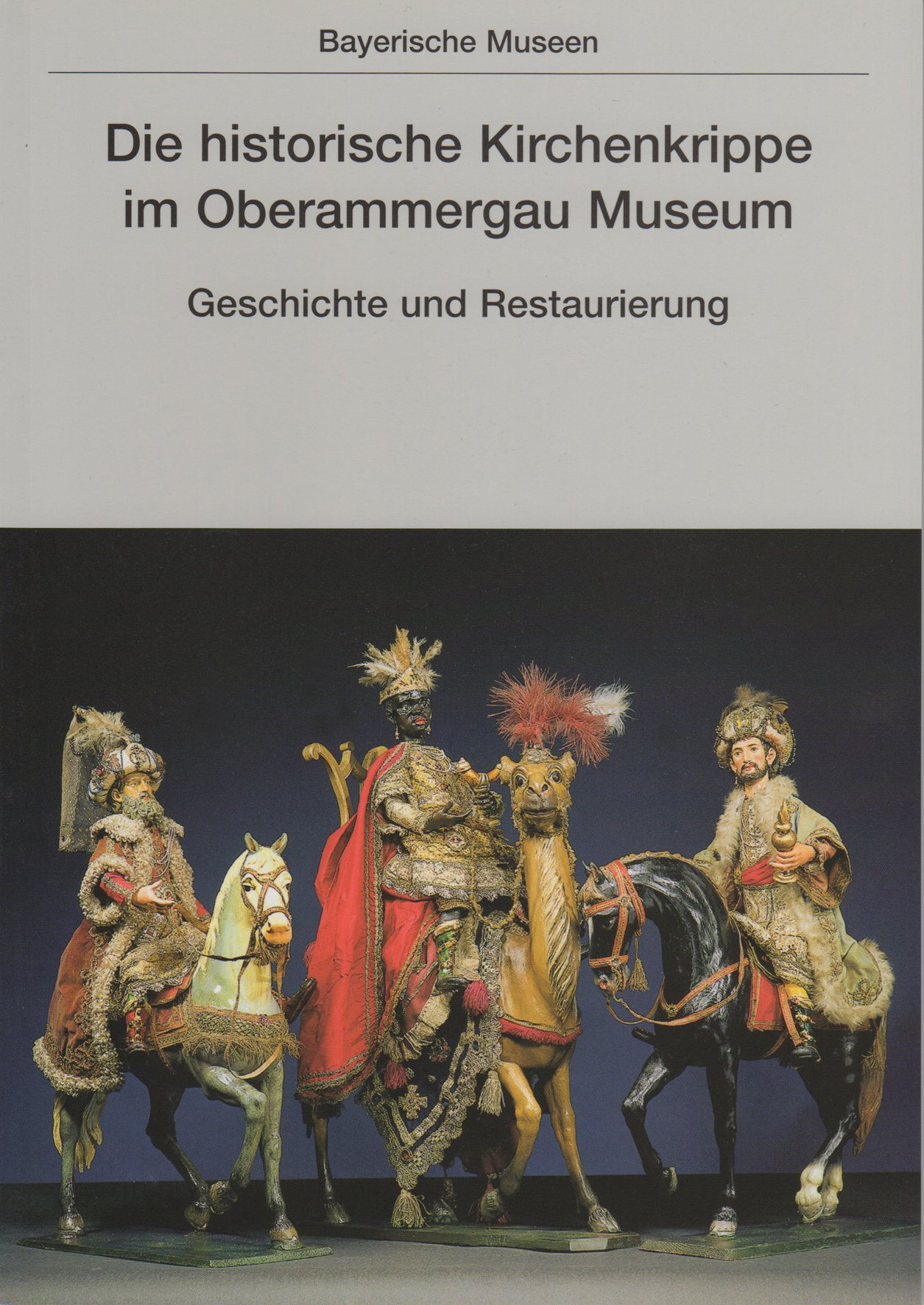
Die historische Kirchenkrippe im Oberammergau Museum
Geschichte und Restaurierung, Bayrische Museen Bd. 29
Deutscher Kunstverlag, 2004
inkl. Kurzführer des Museums
Preis: € 9,80
inkl. MwSt und zzgl. Versandkosten
Bestellung gegen Vorauskasse zzgl. Versandkosten, E-Mail an: museum@gemeinde-oberammergau.de
